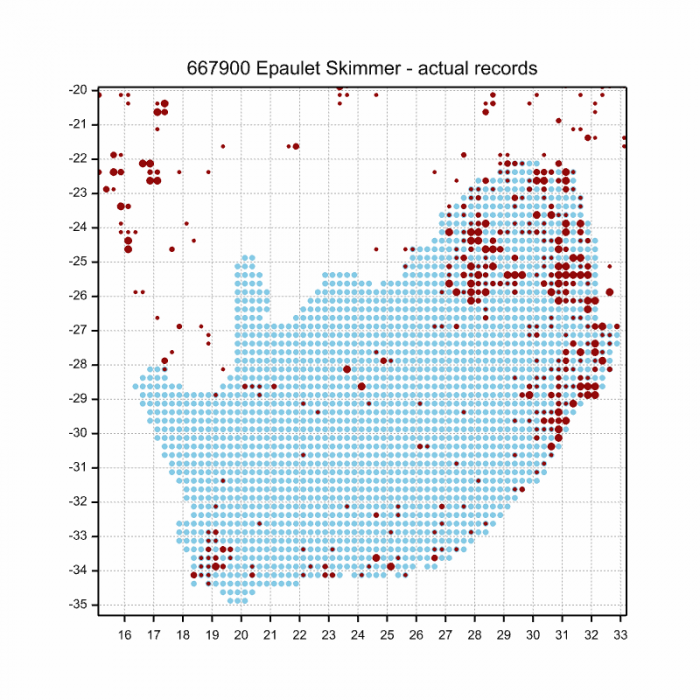The photo above (by Gert Bensch) can be viewed in OdonataMAP here.
Find this species in the FBIS database (Freshwater Biodiversity Information System) here.
Family Libellulidae
Orthetrum chrysostigma – EPAULET SKIMMER
Identification
Medium sized
Length up to 46mm; Wingspan reaches 69mm.
Both sexes are among the more easily recognised Orthetrum species, due to the single diagonal stripe on the sides of the thorax.
Fully pruinose males, however, are hard to identify and are best told by the distinctive shape of the secondary genitalia.
Most similar to the closely related Two-striped Skimmer (Orthetrum caffrum), but that species has a darker, browner thorax with two, pale diagonal stripes on the sides.
Click here for more details on identification.

Ndumo Game Reserve, KwaZulu-Natal
Photo by Ryan Tippett

False Bay, iSimangaliso Wetland Park, KwaZulu-Natal
Photo by Ryan Tippett
Habitat
Makes use of a wide range of freshwater habitats, including Rivers, streams, lakes, pans, dams and water-holes. Favours sites that are fairly open with exposed rocks, sand or gravel. Most common along rivers in the savanna regions.

Photo by Ryan Tippett
Behaviour
Often perches on the ground, but also on rocks and exposed stems and twigs. Hunts from a perch with a rapid, darting flight. Frequently returns to the same perch. Both sexes can be found in the same area.
Status and Conservation
Common and widespread. Listed as of Least Concern in the IUCN Red List of Threatened Species. The Epaulet Skimmer is fairly resistant towards habitat damage and is often common at man-made and degraded sites.
Distribution
Very widespread and occurs virtually throughout Africa, including North Africa. It also occurs in parts of Southern Europe and the Middle East. In South Africa it occurs virtually throughout, but is scarce in the dry central regions.
Below is a map showing the distribution of records for Epaulet Skimmer in the OdonataMAP database as at February 2020.

The next map below is an imputed map, produced by an interpolation algorithm, which attempts to generate a full distribution map from the partial information in the map above. This map will be improved by the submission of records to the OdonataMAP section of the Virtual Museum.


Ultimately, we will produce a series of maps for all the odonata species in the region. The current algorithm is a new algorithm. The objective is mainly to produce “smoothed” maps that could go into a field guide for odonata. This basic version of the algorithm (as mapped above) does not make use of “explanatory variables” (e.g. altitude, terrain roughness, presence of freshwater — we will be producing maps that take these variables into account soon). Currently, it only makes use of the OdonataMAP records for the species being mapped, as well as all the other records of all other species. The basic maps are “optimistic” and will generally show ranges to be larger than what they probably are.
These maps use the data in the OdonataMAP section of the Virtual Museum, and also the database assembled by the previous JRS funded project, which was led by Professor Michael Samways and Dr KD Dijkstra.

